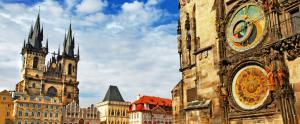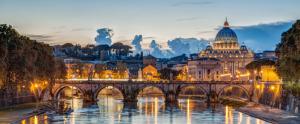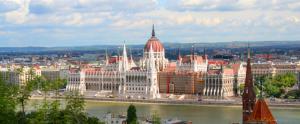You are here Home » Trips a-la-carte » Destinations » Netherlands » Culture Overview
Netherlands - Culture Overview
The Netherlands are seen as the land of tulips, mills and wooden shoes.The cultural life in The Netherlands is varied and lively and The Dutch themselves take great pride in their cultural heritage.
Tulips
Holland is the country of flowers. Bulbs and more bulbs, flower parades and markets castle gardens and flower auctions can be found around every corner! During the spring, the flowers in the bulb fields between Haarlem and Sassenheim in the South Holland province are in bloom. You will of course enjoy riding a bike between bright red, yellow and purple-colored fields. The special Flower Bulb Route can be purchased from the VVV (Tourist Information Office) in Lisse. The best time to see the bulbs in bloom is around mid-April (or a little earlier or later, depending on the weather). You will see more flowers than you have ever seen in one place at one time.
Windmills
The Dutch were the first real innovators of the windmill. Some 100 years ago, Holland boasted with 10,000 operational mills and for five centuries, windmills were the primary source of power in Holland. There are two types of mills: watermills and windmills. The watermills were usually used as corn mills, but they also produced paper, oil and sawed timber. There are approximately 70 of this type left in Holland. The windmill is divided into two categories, the industrial mill and the drainage mill. The industrial mills were named according to their use, like sawmill, but have succumbed to modern technology (there are still a few left). The drainage mills keep the land behind the dikes free of surplus water. These mills are still functioning in some of the older polders. There are approximately 1,000 windmills left and they can be found throughout 12 provinces, but mostly in Zuid Holland. The mills at "Kinderdijk" are a must see! Kinderdijk is one of the best known sights of Holland. In 1997 the Kinderdijk mills were placed on Unesco’s World Heritage Sites List. Nineteen windmills are lined up in two opposite rows. During July and August all the windmills operate on Saturdays. Some of the mills are open to the public.
Bicycles
Nearly everyone owns a bike, and some people even have two. A Dutchman without a bike is like a fish without water! There are many special lanes and paths for cyclists with a total length of approximately 11,000 miles! Before you hop on a bike in Holland, it is a good idea to buy a cycling map. The Tourist Information Office sells bicycling maps. They are available for every province in Holland. Many companies specialize in the rent of bicycles. Important aspect is that Holland is generally flat with only an occasional hill. This makes the country ideal for even longer tours and also allows the youngest and the oldest member of the family to participate. While cycling through Holland you will notice wide-open spaces like the polders, beautiful forests, colorful bulb fields, attractive towns and picturesque villages. En route there are plenty of opportunities to take a rest at terraces of restaurants and cafes, specially built picnic areas or anywhere along the side of the road. All lovers of bicycles should visit the Velorama. It is the only bicycle museum in Holland! It boasts with more than 250 antique and the contemporary bicycles.
Cheese
Holland is also knowned as the 'land of cheese.' This 'cheese culture' has left its mark on cities like Alkmaar, Gouda and Edam. The Dutch have been producing cheese since before 400 AD. There are still over 600 farms today that produce cheese, known as farmers cheese, made from unpasteurized milk. More than 50% of the total cheese production consists of Gouda cheese. Edam cheese is the only cheese in the world to hold a perfectly round shape and is the second most important product in the variety of Dutch cheeses representing 27% of the total Dutch cheese production. Today, the cheese markets in Gouda and Alkmaar (open during the summer months) still feature the old rituals and traditions of the cheese trading process. The cheese porters wear white uniforms and lacquered straw hats. They carry the cheese on barrows painted in the color of their section (80 cheeses per barrow, weighing approx. 353 pounds in total). The cheese is carried to the weigh house, where the Weighing Master calls out the correct weight and writes it down on a blackboard. The porters take the cheeses to the buyers’ warehouses or to lorries waiting to transport the cheeses. The Alkmaar cheese market is unique in the world. It attracts many visitors, as it is one of the best-known sights of Holland. The market is held every Friday morning at 10 a.m. (from April to September) in front of the historical weigh house, in the town center.
National Costumes
The most famous part of the Dutch costume is the wooden shoes. In the past, leather shoes were a luxury that only the rich could afford. These days, 3 million pairs of clogs are still produced in Holland annually. Nowadays, clogs are mostly worn in the countryside, as they are warmer and dryer than rubber boots. Wooden shoes are not only abundant in souvenir shops, but are also still worn by many farmers and bulb growers as cheap, long-lasting and save working shoes.
Paintings
Dutch painters are amongst the greatest the world has ever known. Among the most known belong Vincent van Gogh (The Van Gogh Museum in Amsterdam houses has enormous collection of paintings and drawings by Van Gogh), Rembrandt van Rijn, Johannes Vermeer, Jan Steen, Jheronimus Bosch, Pieter Mondrian.




